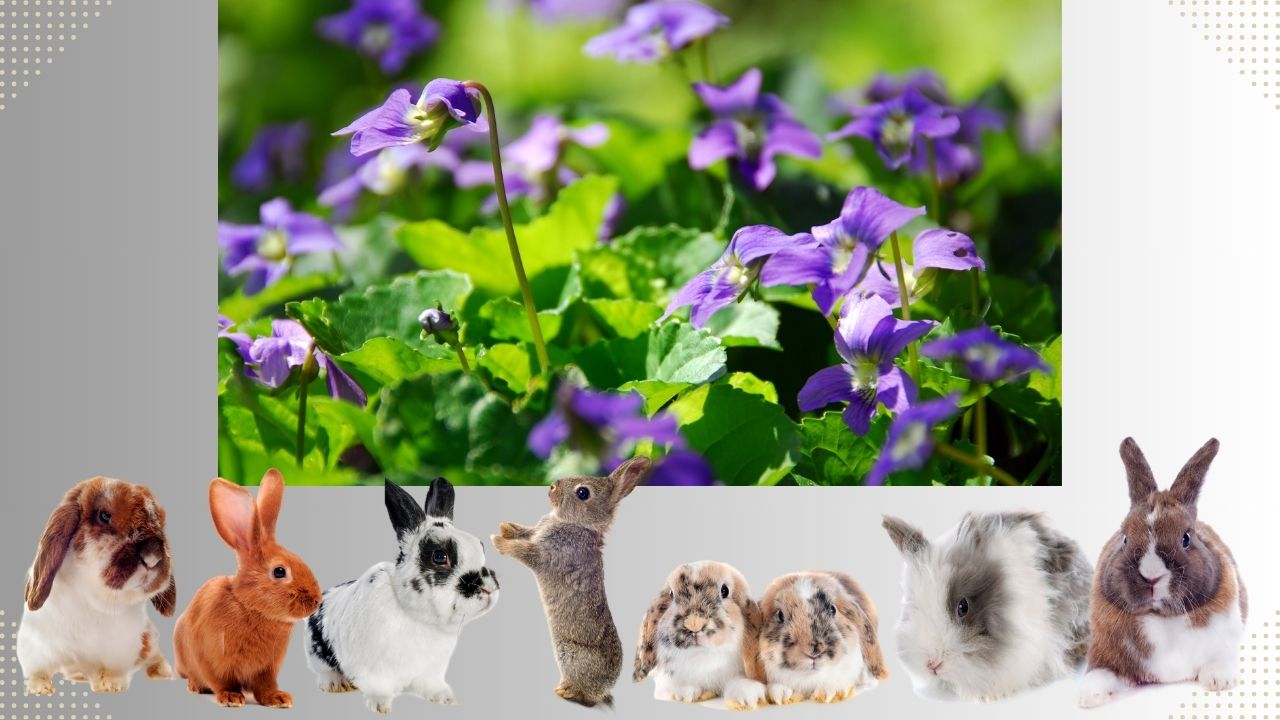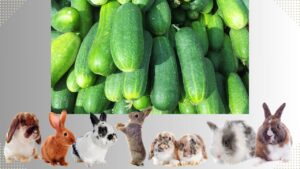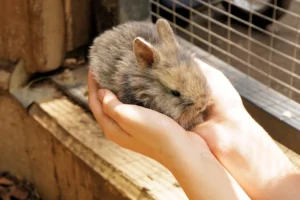Have you ever wondered if rabbits can eat violets? Well, the answer is yes! Violets are not only safe for rabbits to eat, but they also offer several health benefits.
Packed with essential nutrients and vitamins, violets can contribute to your rabbit’s overall well-being. However, it’s important to introduce them gradually and in moderation to avoid any potential risks.
In this article, we’ll explore the nutritional value of violets for rabbits and provide you with helpful tips on incorporating them into your furry friend’s diet.
In This Article
- 1 Key Takeaways
- 2 Nutritional Value of Violets for Rabbits
- 3 Health Benefits of Feeding Violets to Rabbits
- 4 Potential Risks of Violets in a Rabbit’s Diet
- 5 How to Introduce Violets to Your Rabbit’s Diet
- 6 Safe Preparation and Serving Tips for Violets
- 7 Recommended Serving Size of Violets for Rabbits
- 8 Signs of Allergic Reactions in Rabbits to Violets
- 9 Other Flowers and Plants Safe for Rabbits to Eat
- 10 Frequently Asked Questions
- 10.1 Are Violets the Only Flowers Safe for Rabbits to Eat?
- 10.2 How Often Should I Feed Violets to My Rabbit?
- 10.3 Can I Feed My Rabbit Violets if They Have a History of Allergies?
- 10.4 Can Violets Be Fed to Baby Rabbits or Only Adult Rabbits?
- 10.5 Can Rabbits Eat All Parts of the Violet Plant, Including the Leaves and Stems?
Key Takeaways
- Violets lack essential nutrients, vitamins, and minerals necessary for optimal health and growth in rabbits.
- Violets contain fiber, vitamins A and C, calcium, and potassium, which are beneficial for a rabbit’s growth and overall health.
- Violets can pose risks to rabbits due to the presence of oxalates, which can lead to calcium oxalate bladder stones.
- Feeding violets in moderation and ensuring they are thoroughly washed and free from chemicals can minimize risks.
Nutritional Value of Violets for Rabbits
Do you know if violets have any nutritional value for rabbits?
As a veterinary nutritionist, I can provide you with accurate and up-to-date information on the topic.
Violets aren’t considered a suitable source of nutrition for rabbits. While they may be safe for consumption, violets lack the essential nutrients, vitamins, and minerals necessary for optimal health and growth in rabbits.
It’s important to note that rabbits have specific dietary requirements, and their diet should primarily consist of hay, fresh vegetables, and a small amount of pellets.
If you’re looking for alternative sources of nutrition for your rabbit, consider offering a variety of leafy greens such as romaine lettuce, kale, and parsley. These vegetables are rich in essential nutrients and can contribute to a balanced diet for your furry friend.
Health Benefits of Feeding Violets to Rabbits
You should consider feeding a few violets to your rabbit as they can provide some health benefits when consumed in moderation. Violets aren’t only a beautiful addition to your garden, but they can also support your rabbit’s digestion and overall well-being. Here are some key benefits of feeding violets to your furry friend:
- Improved digestion: Violets contain fiber, which aids in maintaining a healthy gastrointestinal tract and preventing digestive issues in rabbits.
- Nutritional value: Violets are rich in vitamins A and C, as well as minerals like calcium and potassium. These nutrients are essential for your rabbit’s growth and overall health.
- Variety in diet: Offering violets to your rabbit adds diversity to their diet, preventing boredom and providing mental stimulation.
- Safe alternative: Compared to other rabbit-friendly plants, violets are a safe choice as they’re non-toxic and pose no harm to your furry friend.
Potential Risks of Violets in a Rabbit’s Diet
Adding violets to your rabbit’s diet can be risky, so it’s important to be aware of the potential dangers. As a veterinary nutritionist, I want to ensure that you have the right information to make informed decisions about your rabbit’s diet.
While violets may seem harmless, they can actually pose risks to your furry friend. One of the main concerns is the presence of oxalates, which can lead to calcium oxalate bladder stones in rabbits. Additionally, violets may contain pesticides or other harmful substances if not sourced from a safe and organic environment.
To minimize the risks, it’s crucial to only feed violets in moderation and ensure they’re thoroughly washed and free from any chemicals. It’s always best to consult with a veterinarian before introducing any new food into your rabbit’s diet to ensure their health and well-being.
How to Introduce Violets to Your Rabbit’s Diet
To properly incorporate violets into your rabbit’s diet, start by gradually introducing small amounts and monitor their response to ensure they tolerate this new addition well. Violets for rabbits can be a nutritious and tasty addition to their diet, but it’s important to introduce them slowly to avoid any digestive upset.
Here are some key points to keep in mind when feeding violets to your bunny:
- Choose the right violet varieties: Not all violet varieties are safe for rabbits to consume. Stick to edible varieties like Viola odorata or Viola tricolor, which are commonly found in gardens.
- Wash thoroughly: Before feeding violets to your rabbit, make sure to wash them thoroughly to remove any potential pesticides or contaminants.
- Serve in moderation: Violets should be given as a treat and not as a staple food. Feed small amounts, about a teaspoon per serving, to prevent overconsumption.
- Monitor for any adverse reactions: After introducing violets to your rabbit’s diet, keep an eye out for any signs of digestive upset or allergies. If any issues arise, discontinue feeding violets and consult with a veterinarian.
Safe Preparation and Serving Tips for Violets
Properly washing and handling violets is essential for ensuring their safety when serving them to your rabbit. As a veterinary nutritionist, I understand the importance of providing a balanced and nutritious diet for your furry friend. When it comes to violets, it’s crucial to pick them from areas free of pesticides or other harmful chemicals. Thoroughly wash the violets under running water to remove any dirt or debris. Store them in the refrigerator to maintain freshness.
Now, let’s get creative with incorporating violets into your rabbit’s diet! You can chop them up and mix them with their regular leafy greens or sprinkle the petals on top as a colorful garnish. Violets aren’t only safe for rabbits but also add a delightful touch to their meals.
Recommended Serving Size of Violets for Rabbits
Are you aware of your rabbit’s recommended serving size of violets? As a knowledgeable veterinary nutritionist, I can provide you with the information you need to ensure your rabbit’s diet is appropriate and balanced.
When it comes to violets, moderation is key. Here is a recommended serving size for your rabbit to maintain optimal health:
- Start with a small amount, such as one violet leaf or flower, to introduce it to your rabbit’s diet.
- Gradually increase the serving size to no more than two or three violet leaves or flowers per day.
- Monitor your rabbit’s response to violets, looking for any signs of digestive upset or allergic reactions.
- Remember to include a variety of other fresh vegetables and high-quality hay in your rabbit’s diet for a well-rounded nutritional intake.
Signs of Allergic Reactions in Rabbits to Violets
If your rabbit shows any signs of sneezing or itching after consuming violets, it’s important to consult your veterinarian for further guidance. As a veterinary nutritionist, I understand the dietary requirements and nutritional needs of rabbits.
While violets are generally safe for rabbits to eat in small amounts, some rabbits may have allergic reactions to them. Allergy symptoms may include sneezing, itching, or skin irritation. If your rabbit exhibits any of these signs, it’s crucial to seek professional advice.
Your veterinarian can assess the severity of the allergic reaction and recommend appropriate treatment options. The treatment may involve removing violets from your rabbit’s diet and providing alternative, safe food options.
Other Flowers and Plants Safe for Rabbits to Eat
You can expand your rabbit’s diet by incorporating other flowers and plants that are safe for them to eat. Providing a varied diet is beneficial for rabbits as it ensures they receive a wide range of nutrients necessary for optimal health and growth.
Here are some safe flowers and plants you can include in your rabbit’s diet:
- Dandelion greens: Rich in vitamins A, C, and K, as well as calcium and iron.
- Marigold petals: Contain antioxidants that support the immune system.
- Chamomile flowers: Known for their soothing properties and can help with digestive issues.
- Nasturtium flowers: Provide a good source of vitamin C and can act as a natural dewormer.
Incorporating these safe flowers and plants into your rabbit’s diet not only adds variety but also provides additional health benefits. Always introduce new foods slowly and consult with a veterinarian or animal nutritionist for specific recommendations based on your rabbit’s individual needs.
Frequently Asked Questions
Are Violets the Only Flowers Safe for Rabbits to Eat?
Yes, violets are safe for rabbits to eat, but there are other flowers they can enjoy too. Rabbits have specific feeding habits, and it’s important to provide them with a varied and balanced diet.
How Often Should I Feed Violets to My Rabbit?
Feeding violets to your rabbit can provide nutritional benefits. However, it’s important to consider the feeding frequency. Violets should be given as a treat in moderation, alongside a balanced diet.
Can I Feed My Rabbit Violets if They Have a History of Allergies?
If your rabbit has a history of allergies, it’s important to be cautious when feeding them violets. Allergies and feeding violets can potentially trigger a reaction, so consult with a veterinarian to ensure your rabbit’s safety.
Can Violets Be Fed to Baby Rabbits or Only Adult Rabbits?
Yes, you can feed violets to baby rabbits. Violets have nutritional value for rabbits, providing essential vitamins and minerals. However, it’s always best to consult with a veterinarian to ensure a balanced diet.
Can Rabbits Eat All Parts of the Violet Plant, Including the Leaves and Stems?
Yes, rabbits can eat violets, including the leaves and stems. However, it is important to note that some violets may be toxic to rabbits, so always consult a veterinarian to ensure your rabbit’s diet is safe.





